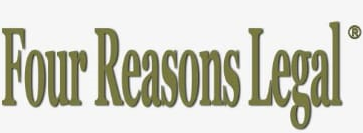Natural and Organic Food Trademarks

Understanding the various national food labeling requirements is necessary when registering your food trademark and marketing your food product. There are many words and food labels that can be used for marketing food products, but some can be misleading, and others require special understanding and certifications for their use. Unfortunately, failure to comply with these labeling rules, even if done by accident, can result in fines and legal entanglements. For that reason, it’s a good idea to consult with a trademark and intellectual property lawyer before attempting to register your food trademark and before marketing your food product.
What Is the Difference Between “Natural” and “Organic?”
If you are trying to determine how to trademark or market your food product, it is crucial to understand the distinction between foods labeled “organic” and those labeled “natural” or “all-natural.” Accidentally mislabeling your food products could result in expensive fines, loss of rights, and potential lawsuits.
Using “Natural” in Your Product Trademark
Believe it or not, the word “natural” is fair game for use in trademarks and labels. In fact, anyone can use the word “natural” or “all-natural” either as part of their brand or product trademark or appearing anywhere on the product packaging and description. Currently, there are no universal or national definitions or standards for claiming food products to be “natural” or “made with natural ingredients.” Basically, any food product can be labeled as “natural” and may even use the word “natural” in the product name or trademark.
However, you do have to be careful. The phrase “Certified Naturally Grown” is a trademarked label and seal that can only be used by farms and facilities that have been officially certified by the nonprofit organization called Certified Naturally Grown. If you have not received this certification and try to say your product was Certified Naturally Grown anyway, or if you use the seal associated with this certification on your food product packaging, you could be facing serious fines and possible legal claims against you.
Using “Organic” in Your Product Trademark
While “natural” is fair game, the word “organic” is another story altogether. Using the word “organic” in any way to describe your food product is a complex matter. To use the word “organic” or the trademark USDA Organic seal to sell your product, both the growing and the processing facilities involved in making your product must have been inspected and approved by a USDA-accredited certifying agent. In order to receive approval, you must meet a series of standards issued by the Natural and Organic Program (NOP) of the USDA. The hurdles don’t end there. Even after receiving approval, you must request a review of the label and product marketing with your certifying agent before selling a product. Your certifying agent will ensure the organic seal is printed and displayed properly.
Understanding the “Organic” Label
If you take a stroll through the organic aisle of any grocery store or supermarket and look closely at all the labels, you will notice some variation in the ways different products use the word “organic.” You may also notice that some products use the organic seal put out by the USDA, while others do not. Some variations you might see include:
- Organic: Food, wellness, or beauty products labeled simply as “organic” must contain at least 95% organic ingredients and must not contain or have been produced using any synthetic growth hormones, synthetic ingredients, biotechnology, pesticides, antibiotics, or irradiation. These products will likely have the small, round, green and white symbol that says “Certified Organic” displayed prominently on the package.
- Made with organic ingredients: Food, wellness, or beauty products claiming to have been “made with organic ingredients” must have at least 70% certified organic ingredients. However, products containing only 70% organic ingredients cannot use the USDA organic seal.
- Certified naturally grown: As previously noted, using this label requires a special certification by a nationally recognized organization other than the National Organic Program of the US Department of Agriculture (USDA). To use this label, food products must have been grown and processed using the same standards required by organic labels, but on a farm or facility that has not been certified by the USDA and received a slightly less expensive certification through another organization. Some operations choose this option because the official USDA certification is difficult to obtain and not cost-effective for smaller businesses.
- Natural or all-natural: Products claiming to be “natural,” “all-natural,” or “naturally made” are not required to have any certifications and do not have to meet any nationally recognized standards. This is simply a marketing strategy used to make food products appeal to a certain clientele.
5 Steps to Becoming Certified Organic
By now, it is probably clear that labeling your products “organic” or using the official USDA organic seal requires some legwork and that you can’t simply slap the word “organic” on your product label and hope for the best. At this point, you might be wondering what exactly is involved in securing this certification. There are five main steps that any farm or production facility needs to take to become certified organic.
Step 1: Develop Your Organic System Plan
The foundation of the USDA organic certification is establishing an organic system plan that meets all requirements for the type of product(s) you produce. The specific regulations and details vary depending on the type of product being farmed, processed, or manufactured. Regardless of the kind of product seeking certification, the organic system plan must address all parts of the process involved, including growing, tilling, harvesting, handling, processing, packaging, storing, transporting, manufacturing, record-keeping, and more.
Step 2: Implement Your Organic System Plan
After developing a NOP-approved organic system plan specific to the product you grow or produce, the next step is to begin the actual implementation of the plan. This step usually takes a little trial and error. To save time and money, you should have your plan reviewed by a USDA-accredited certifying agent.
Step 3: Schedule an Inspection
Once your organic production process has been implemented and is running smoothly, schedule an on-site inspection with an accredited certifying agent. The certifying agent will conduct a thorough inspection of your farm or processing facility. They will closely examine all components outlined in your product-specific organic system plan and carefully record their findings.
Step 4: Have Your Findings Reviewed
After inspecting your farm or facility, the certifying agent will then review their findings. The certifying agent will compare their findings to your organic system plan and determine whether they meet the USDA organic standards.
Step 5: Await Approval
If your operation complies with the rules and your certifying agent is satisfied with the findings taken from your facility, they will issue a certificate and a list of products from your operation that can be sold as organic. After approval, your farm or facility must schedule a yearly inspection to maintain your certification. You are also required to schedule an inspection and update your organic system plan anytime you change or modify your process or practices.
Processed Goods Using Organic Ingredients
If you are processing a product that uses all or mostly organic ingredients, whether you produced the ingredients yourself or purchased them from another operation, you still need to have your new product and facility inspected and certified if you want to sell the product as organic. This is the case even if your new product is a simple combination of just two other ingredients, each of which is certified organic on its own. This is because, to use the official USDA organic seal, you must be able to prove that your processing facility, packing, transport, and all other elements of production meet the national USDA standards.
Violating the USDA Organic Trademark
The consequences of using the official USDA organic seal or labeling your food or wellness products as organic when you know they do not meet the USDA and NOP requirements are severe. The USDA organic seal is the official mark of the Agricultural Marketing Service (AMS) and is protected by federal regulation 7 CFR section 205.311. According to the USDA Agricultural Marketing Service, falsely representing products as organic or providing false documents stating certain products are organic violates federal regulations. Each violation is punishable by fines of up to $18,530.
Contact a Colorado Intellectual Property Lawyer
If you are interested in registering a trademark for your product or business, or if you have questions about how to legally market and advertise your products, Four Reasons Legal can help. Our team of skilled, knowledgeable, and dedicated attorneys have experience handling all manner of trademark and intellectual property disputes and litigations. If you are being accused of trademark rights violations, or if you are concerned that your trademark rights are being violated by another individual or business entity, contact Four Reasons Legal today. We will work tirelessly to defend your rights, reputation, and property and help ensure the continued success of your business.




